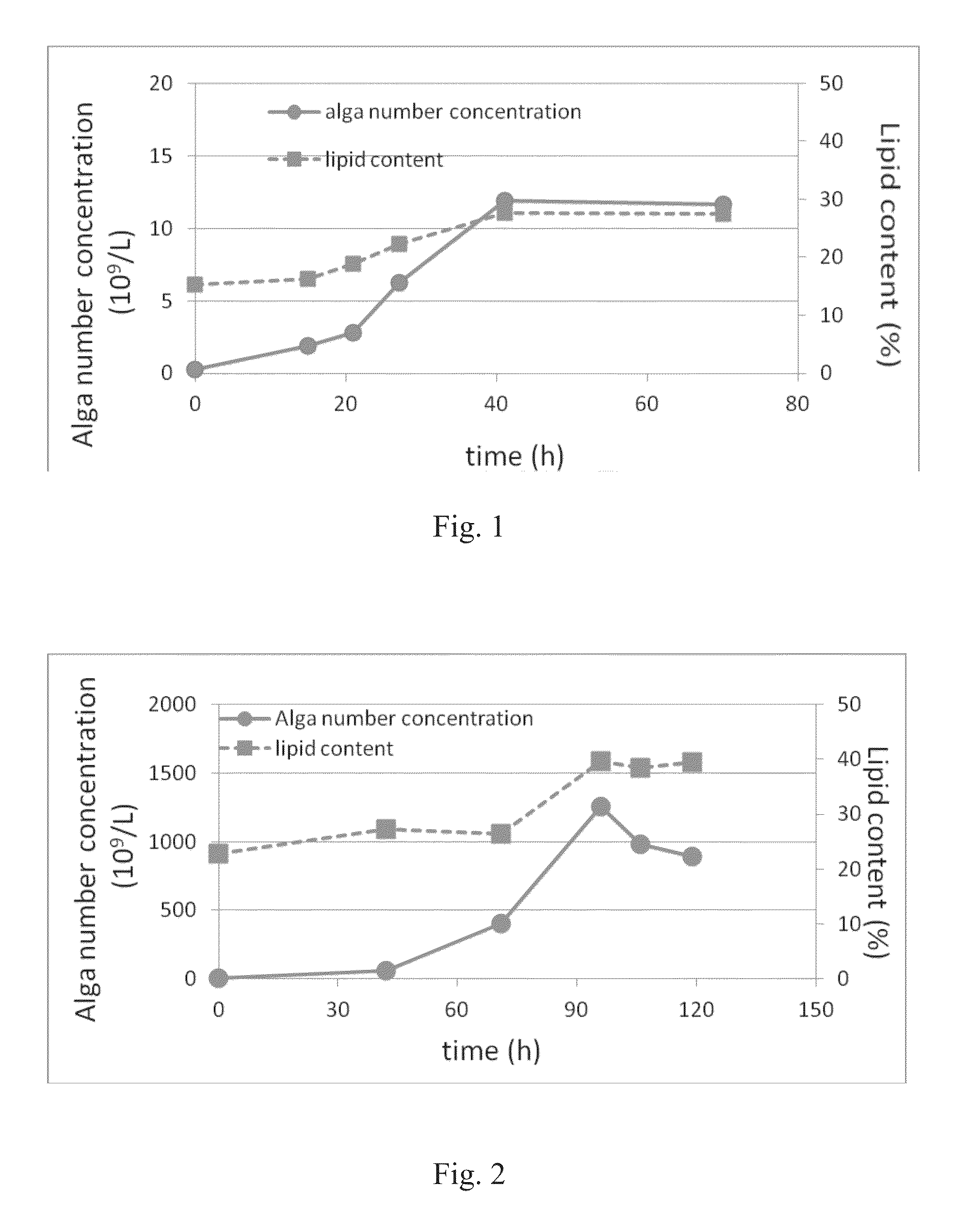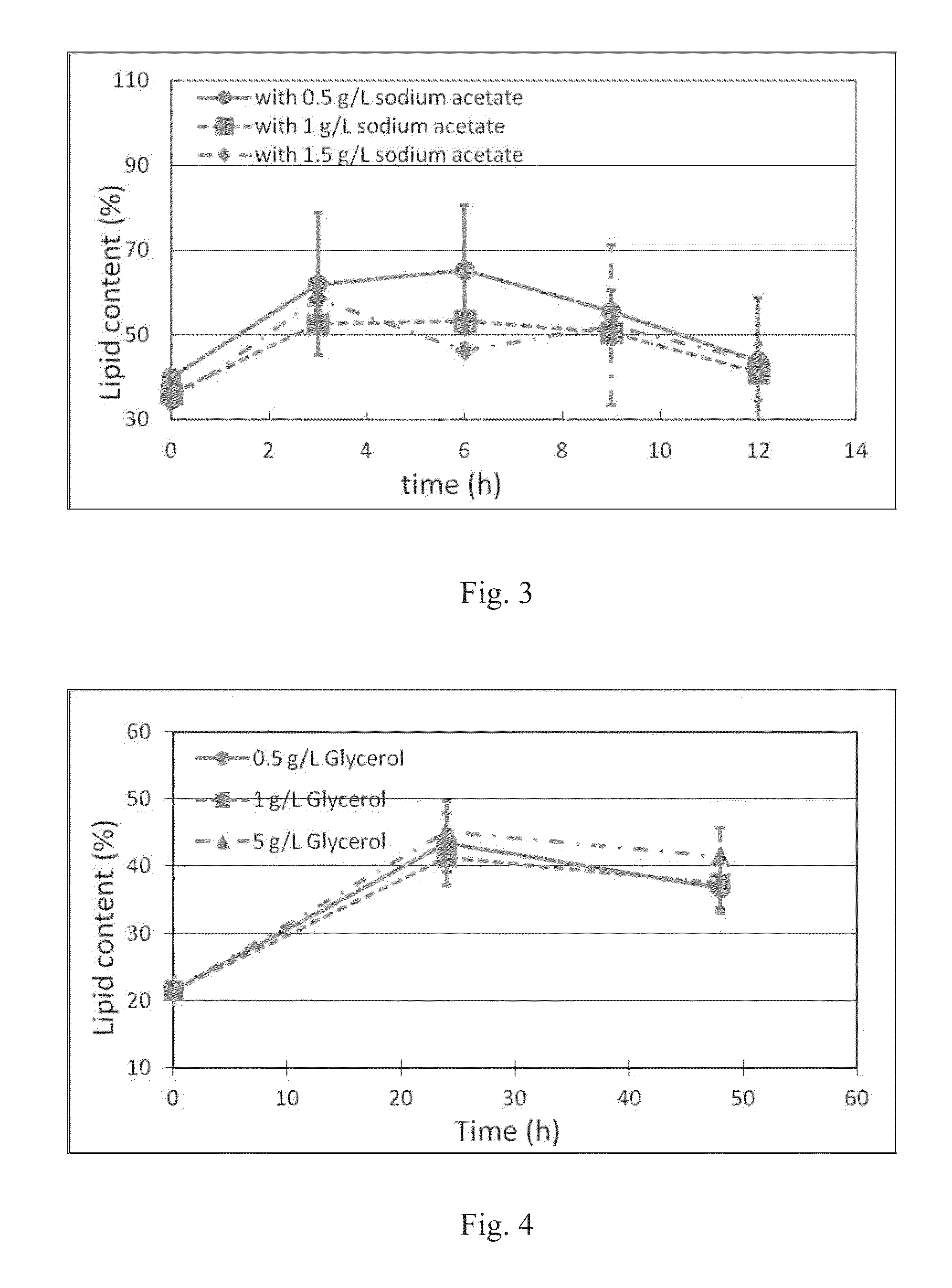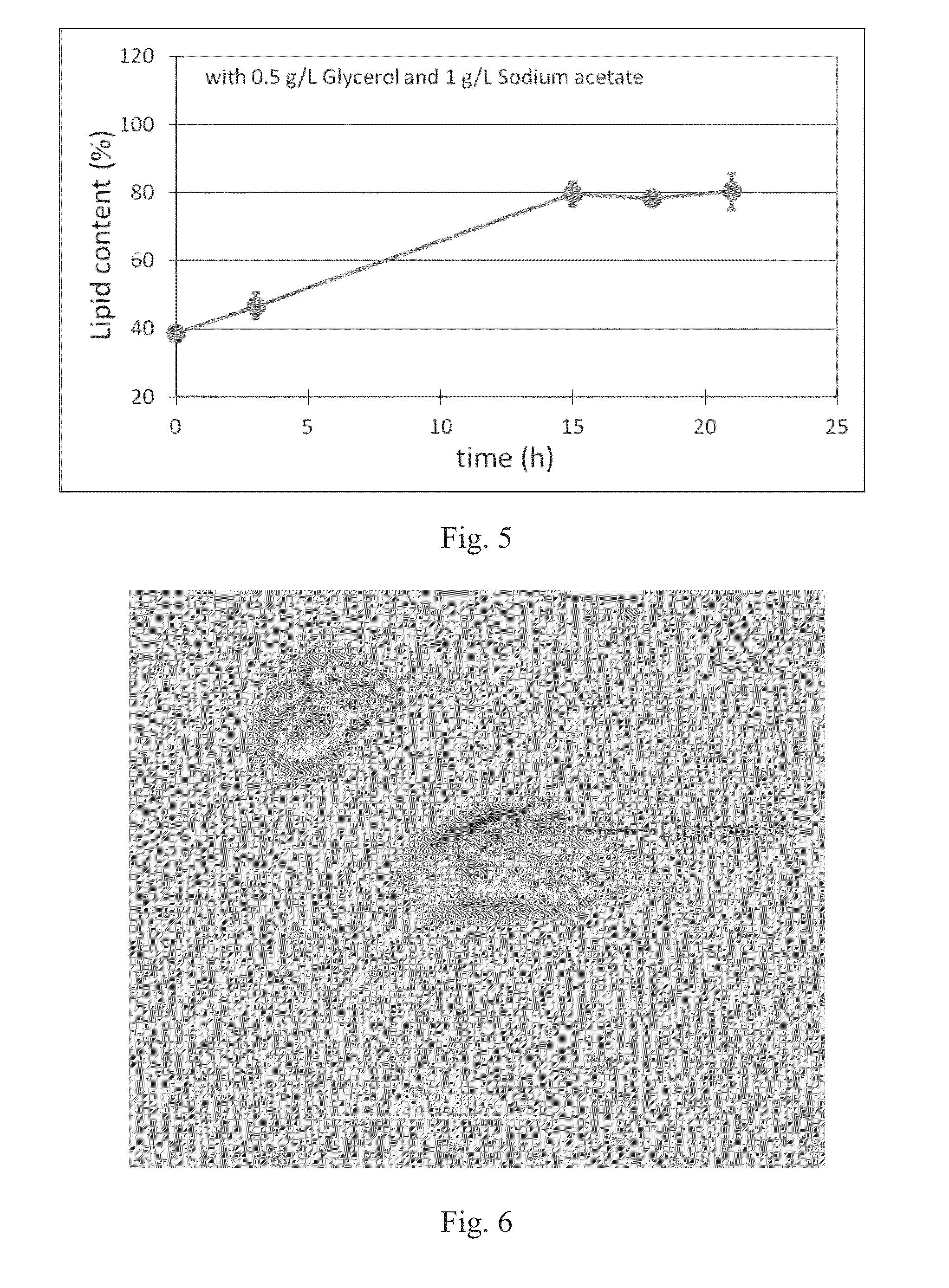Algae having intracellular lipid particles and high lipid content
- Summary
- Abstract
- Description
- Claims
- Application Information
AI Technical Summary
Benefits of technology
Problems solved by technology
Method used
Image
Examples
experiment 1
Algae Culture With Bacteria and Ketchup as Carbon Source
[0102]The objective of Experiment 1 was to investigate algae culture using bacteria and ketchup as the carbon source. The algal growth and lipid production were measured.
[0103]1.8 g / L bacteria cell were added to mineral solution and then a small amount of algae were inoculated into the bacteria solution for batch culture. During the batch studies, the pH of all systems was maintained at 5 with 0.2 mol / L NaOH and 0.2 mol / L HCl.
[0104]Algae were cultured in a 3 L fermentor at 200 rpm with 5% dissolved oxygen by waste ketchup sugar and nitrogen source (NH4Cl and yeast extract). The initial pH was uncontrolled until it dropped back and was maintained at 5 by 1 mol / L HCl. Algae were then fed by additional ketchup sugar and a nitrogen source to grow to high concentration.
[0105]The material used included mineral solutions (0.13 g / L KH2PO4, 0.3 g / L MgSO4.7H20, 0.18 g / L CaCl2.2H2O, 0.01 g / L MgCl2.4H2O, and 5 g / L NaCl), glucose, ketchup s...
experiment 2
Lipid Enhancement With Acetic Acid / Acetate Salts
[0120]The objective of Experiment 2 was to investigate the effect of acetic acid and sodium acetate on lipid enhancement.
[0121]The acetic acid molecules were formed into acetyl-CoA and the acetyl-CoA was further processed into free fatty acid. Compared to the conversion of glucose into free fatty acid, the conversion of acetic acid into free fatty acid requires less steps and enzyme, which makes it more effective in enhancing lipid production.
[0122]Algae were first cultured and then collected by centrifuge. After washing with deionized water once, algae were re-suspended into salts solution (Table 1). 0.5, 1, and 1.5 g / L sodium acetate were added to the re-suspended algae solution individually at the beginning. During the batch studies, the pH of all systems was maintained at 5 with 0.05 mol / L NaOH and 0.05 mol / L HCl.
TABLE 1Salts solution for fattening studies.SaltConcentration (g / L)KH2PO40.3MgCO30.4CaCO30.05MgSO4 7H2O0.1Na2EDTA0.0044H...
experiment 3
Lipid Enhancement With Glycerol
[0128]Glycerol molecules have three hydroxyl groups, which can react with the carboxyl group of free fatty acid to form triglyceride. Triglyceride have no inhibitory effect on organism cells and thus the inhibitory effect of free fatty acid can be prevented by converting the free fatty acid to neutral triglyceride and the lipid content can be further enhanced.
[0129]Algae were first cultured and then collected by centrifuge. After washing with deionized water once, algae were re-suspended into salts solution (Table 1). 0.5, 1, and 5 g / L glycerol were added to the re-suspended algae solution individually at the beginning.
[0130]During the batch studies, the pH of all systems was maintained at 5 with 0.05 mol / L NaOH and 0.05 mol / L HCl.
[0131]The materials used in Experiment 3 were salt solution (Table 1), glycerol, NaOH, HCl, chloroform, methanol, acetic acid, hexane, diethyl ether, and acetone.
[0132]The dry weight analysis and lipid analysis were performed...
PUM
 Login to View More
Login to View More Abstract
Description
Claims
Application Information
 Login to View More
Login to View More - R&D
- Intellectual Property
- Life Sciences
- Materials
- Tech Scout
- Unparalleled Data Quality
- Higher Quality Content
- 60% Fewer Hallucinations
Browse by: Latest US Patents, China's latest patents, Technical Efficacy Thesaurus, Application Domain, Technology Topic, Popular Technical Reports.
© 2025 PatSnap. All rights reserved.Legal|Privacy policy|Modern Slavery Act Transparency Statement|Sitemap|About US| Contact US: help@patsnap.com



